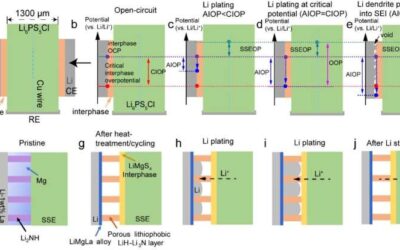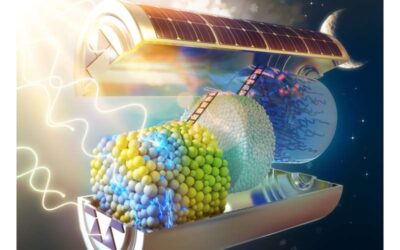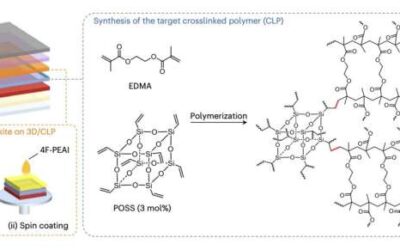As hydrogen inside fuel cells can generate electrical power, scalable methods to reliably split water into hydrogen and oxygen could have valuable implications for the energy industry. These methods could help to produce large amounts of hydrogen for more sustainable...
Energy & Green Tech
New inorganic wide-bandgap perovskite subcells that are both efficient and stable
All-perovskite tandem solar cells, stacks of p-n junctions formed from perovskites with different energy bandgaps, have the potential of achieving higher efficiencies than conventional single-junction solar cells. So far, however, most proposed all-perovskite tandem...
Study defines a crucial parameter for the suppression of lithium dendrites in all-solid-state LiBs
All-solid-state lithium batteries (ASSLiBs), lithium batteries with solid electrolytes, are highly promising battery solutions, as they are often more stable than cells based on liquid electrolytes and have a higher capacity. However, the deposition of lithium inside...
Study explores the extent of Western dependency on Russian nuclear energy
Russia's invasion of Ukraine in February 2022 had a profound deep impact on the economy, inflating the prices of energy and food, with detrimental consequences for both individuals and companies worldwide. As a result, many governments, particularly in Europe, have...
A strategy to improve the efficiency and carrier lifetimes of all-inorganic perovskite solar cells
All-inorganic perovskites have recently proved to be highly promising for the development of photovoltaics (PVs), as they could potentially achieve better thermal stabilities than hybrid perovskite solar cells based on both organic and inorganic materials. Despite...
A new integrated solar battery based on carbon nitride photoanodes
In recent years, researchers have been trying to create increasingly efficient solar technologies and more sustainable battery designs. Among emerging sustainable energy solutions are solar batteries, systems that can store the energy collected by solar cells or...
A photocatalyst that can produce hydrogen peroxide from oxygen and water
Hydrogen peroxide (H2O2) is a colorless liquid compound with strong oxidizing properties that can have numerous industrial and medical applications. This compound is generally synthesized through the anthraquinone process, through which the compound anthraquinone...
Study explores the viability of realizing stable high-voltage O-redox cathodes
To meet rising energy demands and power the countless electronic devices on the market, researchers will need to develop new advanced battery technologies. These technologies should ideally have higher energy densities and longer lifetimes, so that they can store more...
A strategy to stabilize 3D/2D perovskite heterostructures for solar cells
Hybrid perovskite solar cells (PSCs) made of organic and inorganic materials are highly promising energy solutions that could help to reduce carbon emissions worldwide. In recent years, these cells' power-conversion efficiencies (PCEs) have improved significantly,...
Simple techniques to quantify Li plating and speed up the charging of Li-ion batteries
Lithium-ion batteries (LiBs) are among the most widespread rechargeable battery technologies, due to their high energy densities and performances. Despite their versatility and advantageous characteristics, these batteries often require specific times to charge and...










